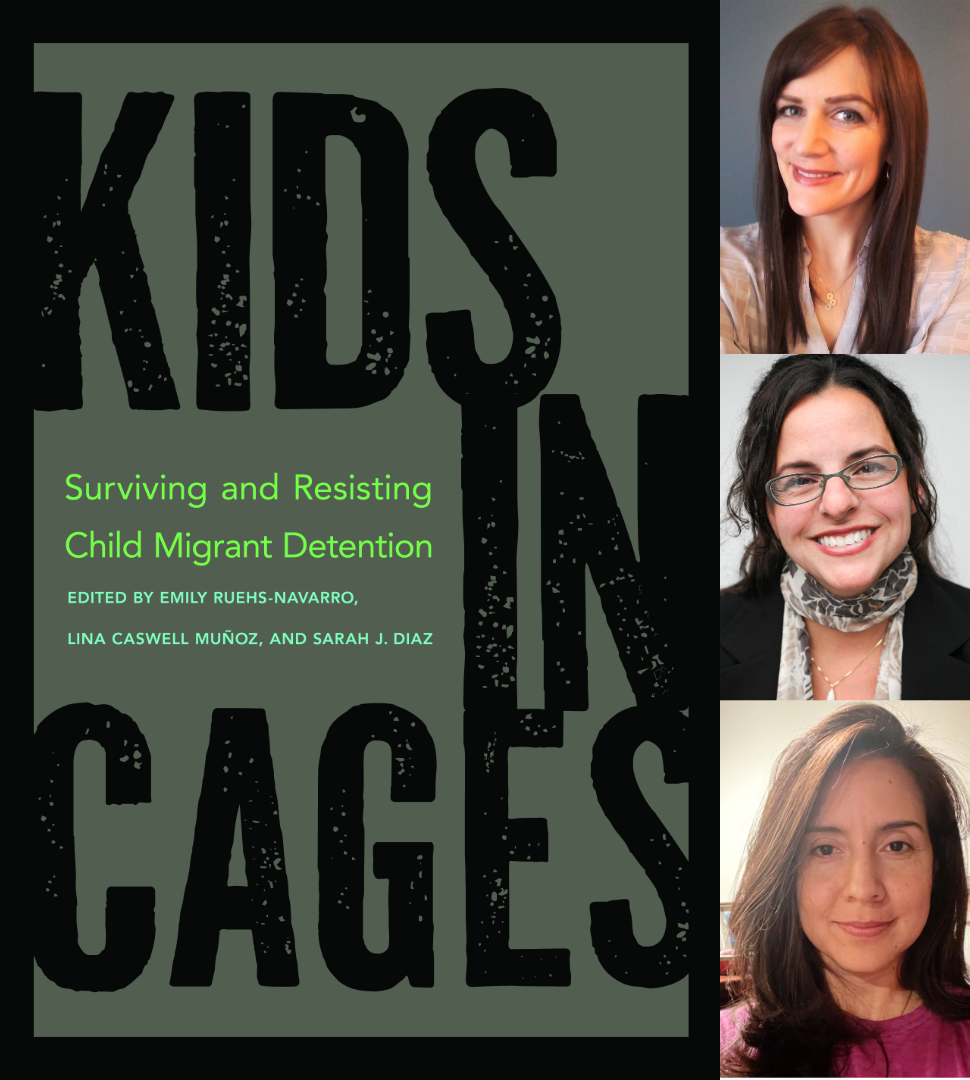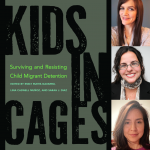November 7, 2024
Kids in Cages: Surviving and Resisting Child Migrant Detention, edited by Emily Ruehs-Navarro, Lina Caswell Muñoz, and Sarah Diaz, reveals the experience of child migrants in detention by the U.S. government. The authors in this volume approach the topic of child migrant detention from a range of perspectives. Some authors, particularly those who provide a legal perspective, chronicle the harms of detention, arguing that despite governmental assurances of child protection, detention is fundamentally a state-sanctioned form of violence. The social scientists in the volume have worked closely with detained youth themselves; in these chapters, authors highlight the ways in which youth survive detention, often through everyday acts of resistance and through the formation of temporary relationships. Read an excerpt from the book’s Introduction written by Ruehs-Navarro and Caswell Muñoz below.
In the early summer of 2019, installations began popping up across New York City. In front of the American Museum of Natural History, at a Williamsburg subway stop, and near the Google building in Manhattan, small chain-linked cages appeared overnight. Inside of them, mannequins laid supine and in fetal positions, covered by foil blankets, with tennis shoes sticking out of the bottoms. Passersby could hear the wails of children coming from the cages, real audio that had been secretly taken in a Customs and Border Protection (CBP) facility. On top of the installations was a hashtag reading #NoKidsinCages (Bekiempis 2019).
These installations, promptly removed by city police, were part of an activist campaign, mobilized to decry a range of anti-immigrant policies put in place by the Donald Trump administration, not least of these the practice of holding migrant children in detention facilities and the zero-tolerance immigration enforcement policy, which separated migrant children from their parents. These activists were part of a diverse coalition that had been mobilized from across the country. In fact, in the previous summer, more than seven hundred demonstrations took place across the United States on June 30, 2018, with slogans such as “#EndFamilyDetention” and “Jails Are Not for Children.” From Huntsville, Alabama, to Chicago to Los Angeles, thousands of people took to the streets, admonishing the administration that “Families Belong Together” and decrying the fact that “ICE [Immigration and Customs Enforcement] Cages Children.” It was a life-affirming demonstration, organizer Marj Halperin told a reporter with the Chicago Tribune: “Lives are truly at stake in this case . . . and the outpouring of people today around the country affirms that this nation supports immigrants” (Mahr, Briscoe, and Olumhense 2018).
It was certainly true that the Trump administration’s anti-immigrant policies prompted a groundswell of support for immigrants, and it was an inspiring reminder that many Americans cared passionately about the government’s treatment of immigrants and the welfare of children. But it was also a deeply ahistorical moment of protest, focused almost entirely on Trump and his administration, with little understanding of the history of child migration,the use of detention as a form of deterrence, and the culpability of various administrations, Republican and Democrat alike, in the inhumane treatment of immigrants. It is telling, in fact, that national backlash against Trump policies has all but disappeared during the Joe Biden administration, although the plight of immigrant children in the United States has not improved in meaningful ways. Indeed, from Ronald Reagan to Joe Biden, the administrations of the past four decades have implemented and cemented a convoluted and utterly dehumanizing system of child migrant detention that has swept up hundreds of thousands of young migrants. And, as is explored in chapter 1 of this volume, it was centuries of dehumanizing and racist policies and ideologies, which “othered” Black, Brown, and Native children, that laid the groundwork for this modern system.
Despite the fact that the public outcry in recent years has decreased significantly, it would be disingenuous to suggest that no one cares about child migrant detention today. In fact, throughout the construction and maintenance of the modern system of detention, there has been a steady push of activists, attorneys, and practitioners who have witnessed the harms done to migrant children and have worked to heal the traumas of detention and push back against the practice altogether. From attorneys who work to close detention centers, to psychologists who attempt to provide mental health care to young people who are detained, to religious leaders who rally their communities to create hospitality homes as alternatives to detention, there is a passionate cohort of people who care and actively engage in finding solutions. However, these individuals do not always agree on a way forward: On the one hand, some argue that the system of detention is so entrenched in larger national policies that, seeing no change in the immediate future, the best way forward is through harm reduction. That is, the goal of these advocates is to make detention child-friendly and trauma-informed. On the other hand, many activists and scholars argue that detention is so fundamentally destructive that there is no way forward in harm reduction. That is, the goal must be to pursue abolition from the system entirely.
It would be easy to engage this conversation on a theoretical level, but the reality is that there are young people today experiencing the humiliations, indignities, and violences of detention. As discussed throughout this volume, it is clear that detention does tremendous harm to these children, and they will bear the scars of their experiences throughout their lives. However, young migrants also find ways to survive. They build relationships with one another, even forging chosen families. They resist indignities, finding spaces and moments in which they might exert power against an overwhelming system. And they find compassion in those around them, surviving off the kindness of strangers. A conversation about the way forward would not be complete without the active centering of their stories and their voices.
In this volume, we present the voices, ideas, and experiences of young migrants and those who have fought with them and for them. Collectively, we agree that the system of child migrant detention is an unjust and dehumanizing institution and we believe in working toward a future in which migrant children are treated with dignity, humanity, and compassion.
 The University of Arizona Press
The University of Arizona Press


